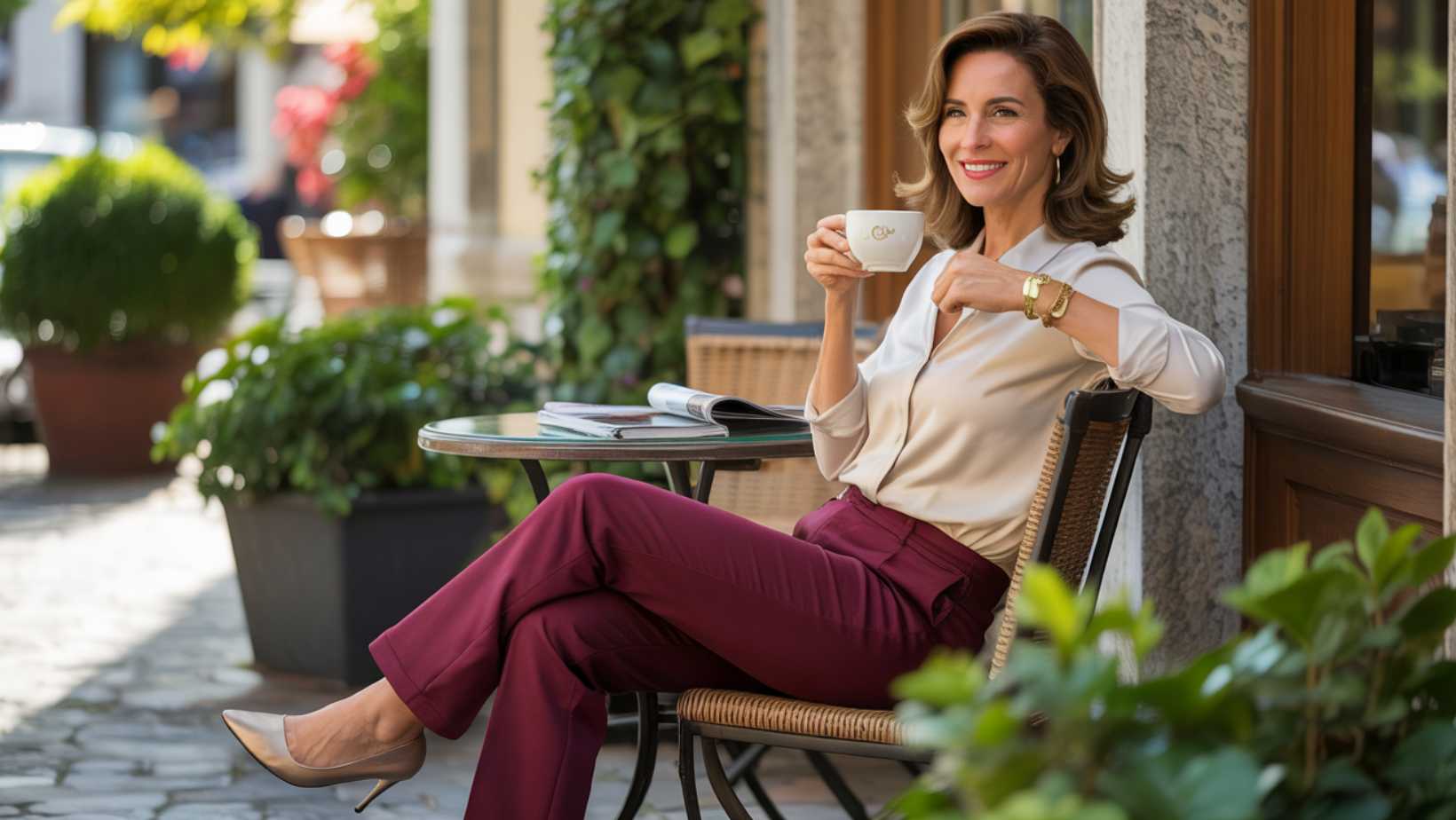Finding comfortable bottoms after 60 can feel like an endless quest. As our bodies change with age, those once-beloved jeans often become instruments of discomfort rather than wardrobe staples. After decades of squeezing into stiff denim that left red marks and created muffin tops, I finally embraced a wardrobe revolution that transformed not just my comfort level but my entire outlook on getting dressed.
The journey began when I noticed myself avoiding social engagements simply because I dreaded wearing anything but my house pants. This realization became my turning point. Today, my wardrobe features four types of bottoms that have replaced my uncomfortable jeans while actually improving how I look and feel.
The Science Behind Comfort: Next-Generation Fabrics That Support Without Squeezing
Modern fabric technology has evolved dramatically in recent years, particularly for women’s clothing. The key innovation lies in four-way stretch materials that move with your body instead of fighting against it. Unlike traditional denim that relies on rigid cotton with minimal give, these advanced textiles distribute pressure evenly across the midsection.
Compression panels have also improved significantly, becoming nearly invisible while providing gentle support. The difference between these and old-fashioned “control” garments is remarkable. Today’s supportive fabrics work with your natural shape instead of painfully restricting it, much like the wide-leg styles that create a more balanced silhouette while offering freedom of movement.
The Fantastic Four: Bottom Styles That Changed Everything
My wardrobe revolution began with pull-on ponte pants. This structured knit fabric offers the polished look of tailored trousers with the comfort of leggings. The absence of buttons, zippers, and tight waistbands eliminates pressure points, while the substantial fabric smooths lumps and bumps without feeling restrictive.
Elastic-waist wide-leg pants have become my second wardrobe hero. These create a beautiful flowing silhouette that balances proportions while the high-rise design supports the midsection. The difference is remarkable – my waist actually appears smaller when wearing these proportioned bottoms, creating an elegant line from waist to ankle.
Stretch microfiber skirts with built-in shorts now replace my summer denim. These miraculous garments offer coverage, prevent chafing, and create a smooth silhouette. The wraparound styles are particularly flattering, as they accommodate fluctuations in bloating while maintaining a streamlined appearance.
Knit culottes complete my comfortable quartet. These mid-length bottoms provide the structure of pants with the airiness of a skirt. Their gentle A-line shape skims over the stomach and hips while creating a modern, sophisticated look that works for multiple occasions.
Strategic Shopping: Finding Your Perfect Comfort Pieces
The secret to building a comfortable-yet-flattering wardrobe lies in understanding fabric content before purchasing. Look for blends containing at least 5% spandex or elastane, which provides essential stretch while maintaining structure. Natural fibers like cotton and modal blended with stretch components offer breathability with freedom of movement.
When shopping online, scrutinize the waistband construction in product photos. Wider waistbands that sit at your natural waist distribute pressure more evenly than narrow bands that can dig into soft tissue. Pull-on styles with smooth, wide waistbands typically offer the most comfort for mature bodies.
Don’t dismiss the power of strategic color choices in creating a flattering silhouette. While many women over 60 default to black bottoms, this can sometimes create a harsh contrast. Finding colors that complement your natural coloring can actually create a more harmonious, youthful appearance.
The transformation extends beyond physical comfort into emotional well-being. Without the constant adjustment and discomfort of ill-fitting jeans, I’ve found myself more present in social situations, more willing to participate in activities, and genuinely more confident in my appearance. The right bottoms don’t just make you look better – they help you feel better in your own skin.
